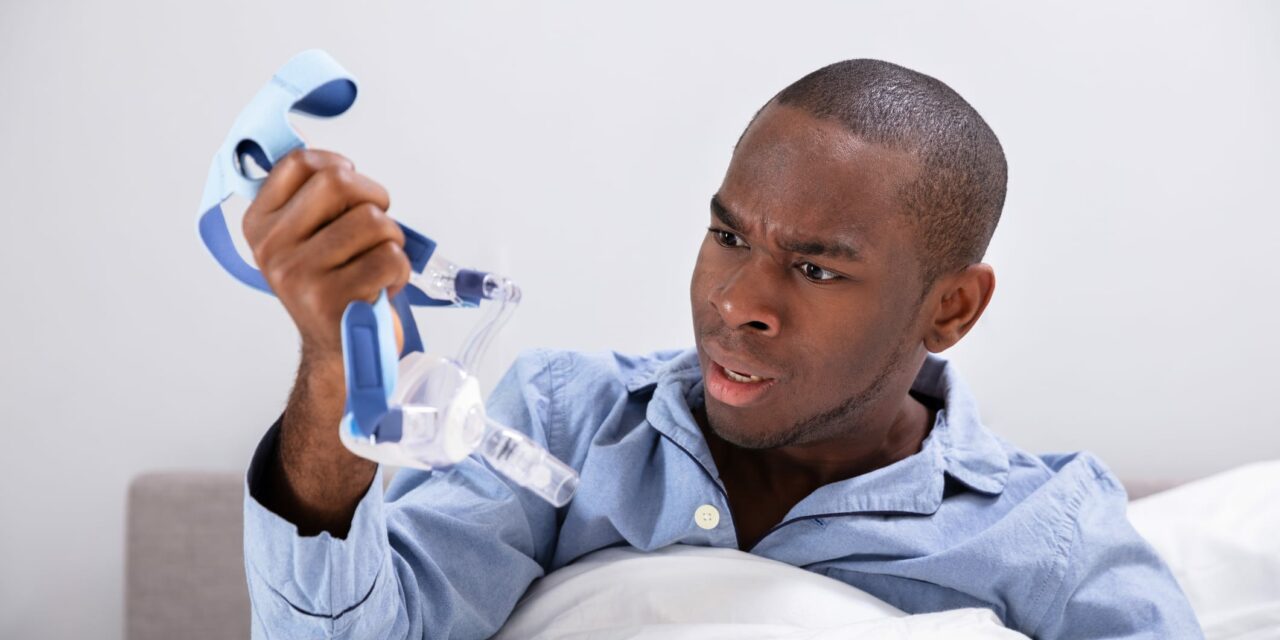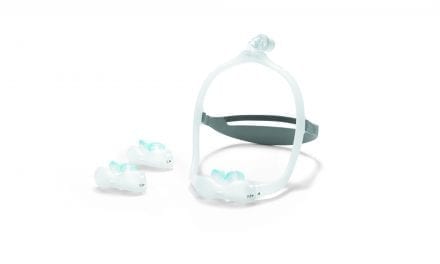By Sree Roy
Instead of a bed, the woman slept on a sofa every night. Inside the cramped efficiency unit in government housing, a real bed would occupy too much space. Amid the ambient noise and light, sleep was elusive anyway, as were the electrical outlets. So when diagnosed with obstructive sleep apnea (OSA) and prescribed a CPAP, the woman found the logistics of plugging in the device near her sitting/sleeping space as a near impossibility.
When sleep specialist Vivian Asare, MD, saw the CPAP data report, she asked the woman probing questions. Unlike many sleep specialists who’d dismiss the patient as just another CPAP failure, Asare dug deeper, even after the woman didn’t offer any insights into her behavior initially. Asare, associate medical director at the Yale Centers for Sleep Medicine, deduced that the patient’s environment was key to her CPAP nonadherence. She wrote a letter advocating for the woman to move to a one-bedroom unit, which was successful. “That really upped her CPAP compliance,” Asare says.
This patient experience relayed by Asare, who is also vice chief, Diversity, Equity, and Inclusion (Pulmonary, Critical Care, and Sleep Medicine), raises a valuable point that I want to stress: Long-standing sleep disparities exist among minoritized racial/ethnic groups and in populations of lower socioeconomic status (which frequently overlap).
These insidious factors impact sleep disorder screening, diagnosis, treatment, and surprisingly (to me), even the likelihood of a sleep disorder as seemingly based on a physical blockage as OSA. Sleep specialists must become aware of these disparities and work to mitigate them, which can result in better sleep health for not only the people directly impacted but also a lower economic burden on the healthcare system as a whole.
Social Determinants in Sleep Medicine
Discriminatory housing practices and environmental racism mean minoritized racial/ethnic groups are likelier to live in lower socioeconomic neighborhoods and be exposed to more environmental hazards.
Chandra L. Jackson, PhD, MS, an Earl Stadtman Investigator who leads the Social and Environmental Determinants of Health Equity Research Group in the epidemiology branch of the National Institute of Environmental Health Sciences, and co-investigators conduct research in this area. They have found that neighborhood environment is a contributor to OSA and its disparities. For example, they identified that air pollution—which can negatively impact the nervous system and cause oxidative stress or inflammatory damage—is linked with disturbed sleep and OSA.1
Lack of diagnosis can also plague these populations. This can be due to less access to healthcare, Jackson says, adding, “There could be differences in terms of availability, accessibility, accommodation, affordability, acceptability.” Among 852 African Americans in the Jackson (Mississippi) Heart Study, the largest longitudinal cardiovascular cohort study, 24% had moderate or severe sleep apnea, of which 95% were undiagnosed.2
Some sleep medicine screening tools are known to fail specific populations. For example, a study of Howard University Hospital Sleep Disorder Center patients found that the STOP-BANG questionnaire demonstrated poor specificity and accuracy in Black patients.3 The researchers say the findings suggest that unique biological and psychosocial factors of Black patients may impact the phenotypic expression of OSA, including that daytime sleepiness is less likely to be a complaint in Black patients with sleep apnea.4
Asare says nuance is needed when asking questions to screen for insomnia too. For example, if you ask the patient “do you have trouble sleeping?”, they may respond “no” (they perceive their sleep as normal). But if you ask “how long does it take you to fall asleep?”, they may respond with a telling “45 minutes”—suggestive of insomnia. “Some studies show that African-Americans may report fewer sleep symptoms, so you may not get the relevant answers if you’re not posing it in a way the patient answers the question in an affirmative way,” she says.
Cultural competence can also be an issue. For example, some cultures think snoring is normal. Explaining why snoring can be problematic may stimulate a better response to the question “do you snore?”
For example, when Gerald George Mannikarote, MBBS, MBA, worked for Baylor College of Medicine, he treated a patient who didn’t realize what CPAP was indicated for. “He thought it was for his snoring issue,” says Mannikarote, now director of sales at AdaptHealth LLC, where he is also vice president of the durable medical equipment company’s Diversity and Inclusion Council.
Though the patient’s mask was yellow with age and the headgear in tatters, “he insisted it worked fine,” Mannikarote says. “We took the time to educate him on the use of the machine and the need to follow up.” Over the next year, the patient become more CPAP adherent, procured resupply, showed improvements in blood pressure, lost weight, and reported increased energy levels.
Fixing Sleep Disparities
The exciting aspect of sleep disparities linked to social and environmental factors is that, unlike those caused by genetic factors such as anatomy, interventions can truly modify sleep disorder development and progression.
Mannikarote says, “Physicians need to include sleep screening as part of their regular workup of their patients. Consider it as part of the vitals or questions asked during history taking. This could be done during the annual physical or during office visits for hypertension, diabetes follow-ups.”
Jackson says, “In addition to including OSA patients as stakeholders in clinical decision-making, consider and address how OSA treatment, as well as treatment adherence, are affected by social forces in addition to individual-level factors.”
Training would-be physicians early about health disparities could go a long way. At Yale Centers for Sleep Medicine, Asare has added implicit bias training to onboarding, developed a mentorship program that recruits internal medicine residents from different and more diverse institutions, and helped create a curriculum for faculty that includes diverse speakers and topics.
Asare also launched the Yale Compassionate CPAP Service in 2018, which recently received an American Academy of Sleep Medicine (AASM) Foundation Community Sleep Health grant.* The program provides uninsured and underinsured patients with equipment and assistance to offset the costs of sleep apnea therapy.
To overcome the access-to-care obstacle, Asare recommends practitioners offer telemedicine appointments and sleep businesses offer vouchers for transportation (such as taxi services) for patients who have trouble getting to appointments.
Finally, what counts as “CPAP adherence” may need to change.
“Marginalized populations sleep less,” Asare says. “We measure compliance as ‘at least four hours of usage,’ but some patients aren’t even sleeping four hours.” She suggests that “compliance” could be defined as a percentage of individual sleep opportunity instead.
If that sounds revolutionary, it’s only because sleep disparities have lingered for so long that continuing to dismiss them is the obvious response. But awareness, interventions, and advocacy by sleep specialists can make a real difference.
References
1. Johnson DA, Ohanele C, Alcántara C, Jackson CL. The need for social and environmental determinants of health research to understand and intervene on racial/ethnic disparities in obstructive sleep apnea. Clin Chest Med. 2022 Jun;43(2):199-216.
2. Johnson DA, Guo N, Rueschman M, et al. Prevalence and correlates of obstructive sleep apnea among African Americans: the Jackson Heart Sleep Study. Sleep. 2018 Oct 1;41(10):zsy154.
3. Fossum M, Najimi N, Whitesell P. 0617 Optimization of OSA screening in a Black population. Sleep. 2020 Apr;43(issue suppl 1):A236.
4. Spear L. 4 Nov 2020. Sleep Review. Available at sleepreviewmag.com/sleep-health/demographics/race-ethnicity/stop-bang-sleep-apnea-black-patients.
Photo 148963673 © Andrey Popov | Dreamstime.com





